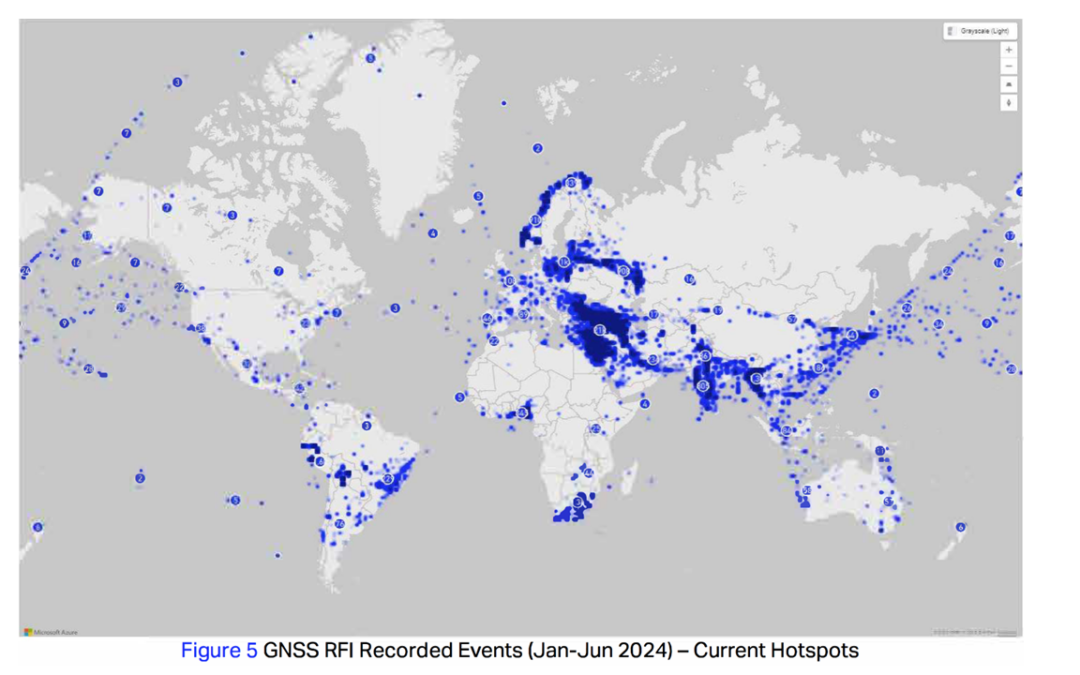Image: International Air Transport Association
What’s New: An International Air Transport Association report showing the rate of GPS loss events per 1,000 flights increased by 65% in the first half of 2024 over that of 2023.
 Graph from: IATA’s “Global Navigation Satellite System GNSS Radio Frequency Interference Safety Risk Assessment” – Version 4 September 2024
Graph from: IATA’s “Global Navigation Satellite System GNSS Radio Frequency Interference Safety Risk Assessment” – Version 4 September 2024
Why It’s Important: This interference impacts the safety and efficiency of the global aviation system.
- Nothing really bad has happened yet, unless you consider the immense amount of fuel burned, money spent, and time wasted unnecessarily across the globe.
- There is also a general consensus that sooner or later something really bad and visible to the public will happen.
- Everyone should be concerned.
What Else to Know:
- Most GPS interference, at the moment, comes from the ground. Since the signals are line-of-sight, they impact aviation more than any other mode of transportation or infrastructure.
- Other transport modes and infrastructures are vulnerable.
- Folks like the tech directors at EUROCONTROL and the study team at OPSGROUP have been asking “what systems are the future of navigation in aviation?” We expect to publish a study addressing that question next week.
- If you want to get a sense of the increase over the last few years, look at the images below from the IATA report showing heat maps for 2022, 2023, and the first half of 2024.
Thanks to our colleague Jeff Shane for a great brief at the PNT Advisory Board and bringing this to our attention!.

Global Navigation Satellite System GNSS Radio Frequency Interference Safety Risk Assessment
Version 4 September 2024
From the report:



Follow us on BlueSky @GPSBackup.bsky.social


